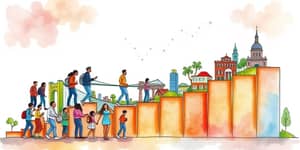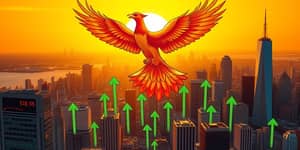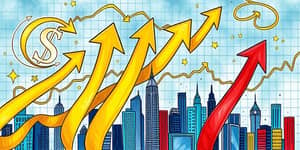Every purchase made, from a morning coffee to a family car, creates ripples that extend far beyond individual wallets. Consumer behavior is not merely a reflection of personal preferences—it is the engine that propels entire economies forward. By understanding what motivates spending, businesses and policymakers can cultivate sustained economic expansion and ensure resilience in the face of uncertainty.
The Foundation: Consumer Spending and GDP
Gross Domestic Product (GDP) measures the total value of goods and services produced within a country. Remarkably, consumer spending typically accounts for more than two-thirds of GDP in developed economies. In the fourth quarter of 2024, for example, consumer outlays rose by 4.2%, contributing significantly to a 2.3% overall growth rate. Within that surge, spending on durable goods jumped 12%, the largest quarterly gain since early 2023.
This fundamental driver of economic growth underscores how vital household budgets are to national prosperity. When people feel secure in their jobs and salaries, they spend more freely on both essentials and luxuries—providing businesses with the revenue they need to hire, invest, and innovate.
What Shapes Consumer Choices?
Consumer behavior is influenced by a complex interplay of factors. Below, we explore the key determinants that guide spending patterns and, in turn, economic performance.
1. Employment and Wages
Steady employment and rising wages fuel discretionary spending. As more individuals secure stable jobs, they gain confidence in their ability to meet ongoing expenses—and to indulge in occasional splurges. The monthly unemployment report serves as a leading indicator of potential shifts in consumer demand.
Moreover, wage growth that outpaces inflation translates directly into purchasing power. When real incomes rise, households allocate additional funds toward big-ticket items, travel, and entertainment—further amplifying economic activity.
2. Consumer Confidence
Traditionally, consumer sentiment forecasts spending trends: optimistic consumers spend more, while pessimistic ones tighten their belts. Yet, in today’s landscape, we witnessing a shift toward the “value now” consumer, who focuses on getting the best return on every dollar spent, regardless of broader sentiment surveys.
Despite mixed feelings—only 53% of consumers reported optimism in late 2024—total spending continued to climb. This resilience highlights a nuanced behavioral change: people remain willing to purchase when they perceive genuine value, even amid economic headwinds.
3. Inflation and Interest Rates
Higher inflation erodes purchasing power, while elevated interest rates increase borrowing costs. Both factors tend to dampen demand for durable and discretionary goods. Conversely, when inflation cools and rates remain low, consumers regain the confidence to finance major purchases like homes and vehicles.
In recent quarters, a moderation in inflation paired with low unemployment has sustained robust spending—even as some consumers voice lingering concerns about the economy’s direction.
4. Personal Values and Social Influence
Today’s buyers increasingly align purchases with personal morals and social causes, ushering in an era of purpose-driven commerce. Whether choosing eco-friendly products or supporting local artisans, values guide a growing share of consumer decisions.
Meanwhile, peer influence—from friends, family, and online communities—continues to shape tastes and preferences. A single viral trend can spark nationwide demand overnight, illustrating the power of collective psychology.
Patterns of Consumer Spending
Understanding aggregate data is essential, but drilling down into spending patterns reveals even more insights:
- Value-Based Purchasing: Consumers seek optimal quality-to-price ratios, balancing occasional indulgences with everyday cost efficiency.
- Income Disparities: Higher earners drive much of the growth in durable goods spending, while lower-income households lean on credit, raising concerns about future debt burdens.
- Replacement vs. New Demand: Natural disasters and product lifecycle cycles generate replacement spending, which fuels short-term GDP gains.
A Snapshot of Key Indicators
The Future of Consumption and Growth
As the economic landscape evolves, so too will the forces shaping consumer decisions. Emerging technologies like AI-driven personalization and augmented reality shopping experiences promise to make spending more intuitive and engaging. Meanwhile, sustainability concerns will push brands to innovate greener products and operations.
For businesses, the imperative is clear: listen to consumers, anticipate their evolving needs, and deliver not only products but also meaningful experiences. Policy leaders, too, must prioritize measures that bolster job growth, support wage gains, and maintain price stability.
In an interconnected world, each purchase—no matter how small—plays a role in a broader narrative of progress. By nurturing an environment where consumers feel valued and empowered, we unlock the full potential of human ingenuity and collective prosperity.
Conclusion
Consumer behavior is the lifeblood of modern economies. Through the intricate interplay of income, sentiment, value perception, and social influence, spending decisions catalyze business investment, job creation, and innovation. Understanding these dynamics is essential for anyone seeking to navigate or shape the economic currents of tomorrow.
By recognizing the power within every consumer choice, we can work together to build a more resilient, inclusive, and thriving economy—one where prosperity is shared and dreams can take flight.
References
- https://www.investopedia.com/ask/answers/042815/which-economic-factors-most-affect-demand-consumer-goods.asp
- https://www.alpha-sense.com/blog/trends/macroeconomic-themes-consumer-behavior/
- https://papers.ssrn.com/sol3/papers.cfm?abstract_id=4458884
- https://www.shoppinggives.com/blog/how-economic-conditions-influence-consumer-behavior
- https://www.mckinsey.com/industries/consumer-packaged-goods/our-insights/the-value-now-consumer-making-sense-of-us-consumer-sentiment-and-spending
- https://www.marketplace.org/2025/01/31/consumer-spending-was-once-again-key-to-gdp-growth-last-quarter/
- https://www.omniconvert.com/blog/consumer-behavior-in-marketing-patterns-types-segmentation/
- https://www.ey.com/en_us/insights/consumer-products/changing-consumption-will-reshape-business-priorities










